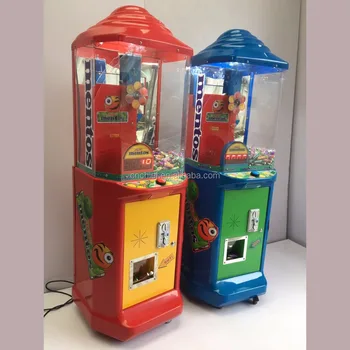Coin Slot Vending Machine

Gameroom Show offers rare coin-operated penny arcade machines, grandma fortune tellers, antique slot machines, and more vintage collectibles for sale. From - A DIY Coin mechanism for vending machines. Simple and easy to build. It can be adapted for your microcontroller problem. Coin-Operated Machines During the early 1880s, the first commercial coin-operated vending machines were introduced in London, England. The machines were commonly found at railway stations and post offices because they were convenient for purchasing envelopes, postcards, and notepaper.
How do they recognize the money you insert?
Coin-operated vending machines work by detecting inserted coins through physical and electronic mechanisms. When a coin is inserted into the vendor’s slot, it travels down a specially angled chute. It is angled to generate a set amount of momentum for the travelling coin.
Broken Coin Slot Vending Machine



The currency then passes through an electromagnetic field generated by an electromagnet that surrounds the chute, generating an electronic signature according to its chemical composition. If this signature doesn’t match one of the vendor’s computer’s known set of signatures (the different coin values) the coin is not logged by the system, but rejected.
Once through the electromagnetic field, the travelling coin must then cross the reject chute to be accepted by the vendor. To do this, the coin must be travelling at the correct momentum as dictated by the chute, with coins travelling too slowly or quickly stopped with physical barriers. This ensures that only official, known currency is accepted – coins which are too light, too heavy or too big or small are physically stopped, as they do not travel down the chute at the pre-designed speed.
If coins pass both checks, they are logged and accepted by the vending machine and function accordingly; if either check fails, however, the coin is rejected and sent down a second chute for collection.
How do they recognize the money you insert?
Vending Machine Coin Slot Images
Coin-operated vending machines work by detecting inserted coins through physical and electronic mechanisms. When a coin is inserted into the vendor’s slot, it travels down a specially angled chute. It is angled to generate a set amount of momentum for the travelling coin.
The currency then passes through an electromagnetic field generated by an electromagnet that surrounds the chute, generating an electronic signature according to its chemical composition. If this signature doesn’t match one of the vendor’s computer’s known set of signatures (the different coin values) the coin is not logged by the system, but rejected.
Once through the electromagnetic field, the travelling coin must then cross the reject chute to be accepted by the vendor. To do this, the coin must be travelling at the correct momentum as dictated by the chute, with coins travelling too slowly or quickly stopped with physical barriers. This ensures that only official, known currency is accepted – coins which are too light, too heavy or too big or small are physically stopped, as they do not travel down the chute at the pre-designed speed.

If coins pass both checks, they are logged and accepted by the vending machine and function accordingly; if either check fails, however, the coin is rejected and sent down a second chute for collection.